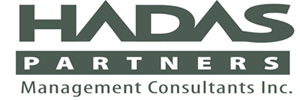When you’re implementing a project with changes to technology or processes, training is always in the project plan. It has to be. Obviously people need the knowledge and skills required to do their jobs after the change is implemented.
Once you go live, there should be no problems in this area. People should know what to do and be able to do it. So why is there sometimes confusion among employees about how they do their jobs with the new processes and technology?
Often the reason is gaps in the Training Plan.
This became crystal clear to us several years ago when we were brought in to be “the people change insurance policy” for an SAP implementation. At least this is how our sponsor explained it to us over lunch. A system implementer was responsible for the technology, the processes and the training. We were responsible to make sure there was good adoption and that the change was sustainable.
This put us in an awkward spot, the most awkward being responsible for overseeing the system implementer’s Training Lead and team. We were given the Training Plan to review, and this is where we saw trouble on the horizon.
The plan included, as one would expect with a system implementer, thorough training on the new technology. There was training on how to use the new system and on how to execute detailed workflow steps through task-based scripts.
The Missing Pieces
Now, this training is important. Actually, it is critical, a must-have. But just like a stool, one leg is not enough (unless you’re milking cows by hand). This plan had two critical pieces missing. And often it is the absence of the other two pieces that cause problems. These are the two main reasons why training fails on these types of projects.
It was the absence of these two pieces that resulted in a serious conflict and escalation to the Executive Sponsor and the system implementer’s Account Partner in charge of this large program. But more on that later, at the end of this blog. First, let’s look at what was missing and how you can avoid this kind of problem.
 A piece that is often missing is training on the new business or operational processes. As opposed to the detailed workflows needed to execute a specific low-level task, this training focuses on a user understanding the larger business context.
A piece that is often missing is training on the new business or operational processes. As opposed to the detailed workflows needed to execute a specific low-level task, this training focuses on a user understanding the larger business context.
The user needs to understand how their detailed tasks fit into the larger whole. They need to understand why they need to perform a particular task in a particular way for the whole machine to function effectively. One of the key elements of Adult Learning Theory is that adults need to understand the “why” of what they are being asked to do. Overall process training answers that question, or at least it should.
The third missing piece
The third and final piece of effective training, and one that is rarely if ever included in the initial scope definition, is training on the new behaviour that will be needed for the new processes and technology to work properly.
What is meant by behaviour training? Simple. Here are examples from our past projects.
A new supply chain system included a forecasting functionality. This meant that people who fulfilled orders on a reactive, first-come, first-serve basis now had to look at past trends, forecast demand, and pre-order quantities in advance. This required behaviour training on forecasting basics and best practices.
An offshoring project resulted in people from two different countries and cultures having to work together. This required collaborative behaviour training sessions that focused on process and cultural differences. These sessions resolved initial problems of working together.
A process streamlining program resulted in multiple offices having to use common processes to get their work done. Decision making went from being and independent, individual task, to being a group-based one. That required sessions that developed team-based problem solving to increase teaming skills and build trust.
These are just a few of the examples, and there are many more. The main point is that these new behaviours have to be called out, and activities need to be built into the Training Plan to increase skill levels when it comes to these new behaviours.
So how can you be successful in these situations?
How to win when it comes to training
 When it comes to process training, that is more straight forward. You need to use your process or workflow designers to develop Level 1 to Level 3 process maps for you. Your training developers can then use these to develop relevant training.
When it comes to process training, that is more straight forward. You need to use your process or workflow designers to develop Level 1 to Level 3 process maps for you. Your training developers can then use these to develop relevant training.
When it comes to behaviour training, that is a bit more tricky. First you have to identify these new behaviours and get agreement that these truly will be important going forward. The best way to do this is through an exercise called “More of/Less of”.
This consists of bringing a small group of team members together who understand both the organization and the ideal project outcomes. These individuals identify what behaviours could cause problems going forward therefore need to be reduced (“less of”) after the change project has been implemented. Then they identify what new behaviours they would like to see, or current behaviours they want to see increased (“more of”). You can download a copy of this tool from our website here.
Once identified, you want to review these with your sponsors and key leaders to get their agreement and buy-in.
The next step is to build that into the training materials, or develop separate materials and plan separate sessions. If you have obtained buy-in from your leadership that these behaviours are critical for the new processes to work well, you should have no problems getting any resource time or additional funds to run these sessions. Then you execute these sessions and look like a genius and hero.
All’s well that ends (almost) well
 Back to the conflict. So, how did our story end? Initially the Executive Sponsor became upset that the millions the company spent were not going to cover all the training to make the project successful, as he thought it would. And, the implementer’s Account Partner was not happy that there could be additional costs that would impact the profitability of her project.
Back to the conflict. So, how did our story end? Initially the Executive Sponsor became upset that the millions the company spent were not going to cover all the training to make the project successful, as he thought it would. And, the implementer’s Account Partner was not happy that there could be additional costs that would impact the profitability of her project.
In the end the Account Partner agreed to provide additional process training, while the Executive Sponsor gave us an additional internal resource to develop behaviour training materials and sessions.
The good news was that management declared the project a big success as people adopted the new system readily. People were comfortable with the new technology, the new processes, and with the new behaviours they had to exhibit.
The sad news was that the System Implementer’s Training Lead stopped being our friend. Oh well. As the old saying goes, “You can’t win ’em all!”
Happy project travels, and see you next time!












